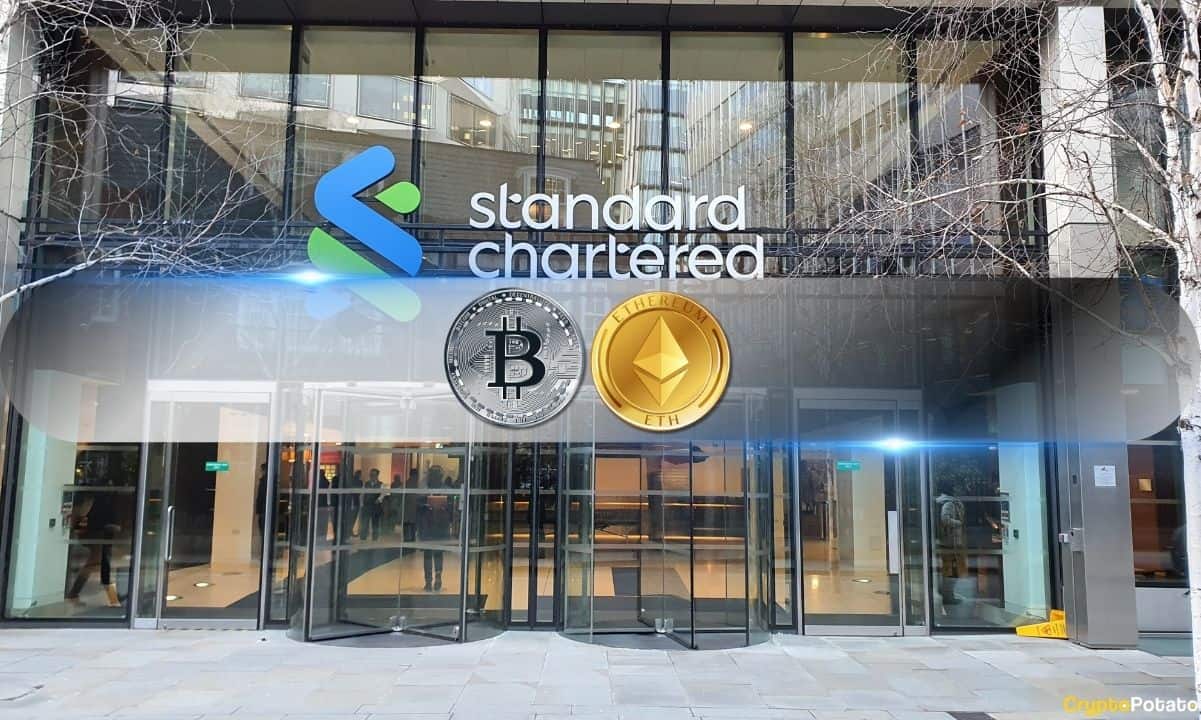Cryptocurrency
Nifty News: NFT restaurant crumbles, Binance NFT ends Polygon support and more

Bold plans for a nonfungible token (NFT)-based restaurant and private members lounge in San Francisco have ended abruptly after the company behind the project halted construction due to challenging macroeconomic factors.
The two venues were being built on Salesforce Park and were going to be dubbed the “Sho Restaurant” and “Sho Club Sky Lounge.”
The latter would only be accessible to holders of the Sho Club NFTs, which cost anywhere from $7,500 to $300,000, and offered access to other future Sho Group hospitality offerings.
Speaking with San Francisco-focused news website SFGATE on Sept. 7, Sho Group CEO Joshua Sigel stated that it was no longer possible to build the project and confirmed that the company ended its lease agreement in July.

The CEO added: “Despite a strong demand for the concept with millions of dollars in both pre-sold and reserved memberships […] we ultimately could not address the many concerns brought about by potential investors, most of which have been around the future of SF and the rising costs of constructing the restaurant.”
Sigel went on to highlight difficult macro factors that ended up making construction costs too expensive, such as “labor shortages, supply chain disruptions, geopolitical uncertainty, and inflation.”
Sigel says Sho Group has refunded everyone who bought the NFTs.
Binance NFT ends support for Polygon
Binance’s NFT marketplace suddenly announced that it would soon wind down support for Polygon-based NFTs but did not provide a clear explanation as to why.
In a Sept. 8 blog post, Binance NFT stated that it will discontinue its The Sandbox NFT Staking Program later this month, citing a decision to streamline product offerings on the platform.
The program allows users to stake their Polygon-based Land NFTs from The Sandbox to earn SAND token rewards; however, it will officially shut down on Sept. 26.
Users will have their NFTs automatically unstaked and returned to the spot wallets.
As part of the closure of the program, Binance NFT also stated that support for the Polygon network will come to an end on the same day, with users being given until Dec. 31 to withdraw all their Polygon NFTs from the marketplace.
Explaining the move, all Binance NFT stated was that “more details will be provided to impacted users at a later date.”

Reddit launches NFL NFTs
To celebrate the new NFL season that kicked off this week, NFT-friendly social media platform Reddit launched NFL-themed NFT avatar collectibles.
TODAY IS THE DAY Introducing NFL #RedditCollectibles for all 32 @NFL teams (limited to 500 units per team). Draft yours now! #NFLxReddit #2023NFLKickoff https://t.co/e43sIHl9oW pic.twitter.com/WOjRagyJmv
— Reddit (@Reddit) September 6, 2023
The collection was launched on Sept. 7 and covers all 32 teams. The NFTs are being sold for $25 a pop, and the artwork depicts the Reddit Snoo mascot wearing various uniforms.
There are 500 tokens available per team; however, at the time of writing, it appears that many of the sets have more than 400 NFTs still available, suggesting there hasn’t been any rush to snap them up yet.

Rumble Kong League x Stance
As part of a partnership with NBA star Paul George and popular sock, underwear and T-shirt brand Stance, NFT project Rumble Kong League has dropped phygital basketball socks.
The drop is part of a broader collaborative project dubbed Hyper Socks, which will eventually see the launch of a 3v3 basketball game with play-to-earn features.
Related: NFT startup Rario loses founders after $120M funding last year: Report
The first stage of the project saw the sale of tokenized socks that can be used in the upcoming game.
In a Sept. 8 announcement, the Rumble Kong League team kicked off stage two by opening up the sale of 250 boxes of physical Stance Sox, that are themed with the cartoon gorilla avatars from the project.
Two legends in their field, joining forces to create greatness.
The RKL x @Stance HyperSocks are live!
Top performance rare fur quality that’ll create a spark on any basketball court.
Only 250 available!
Grab your box before they’re gone! pic.twitter.com/3rQXtTtciI
— Rumble Kong League (@RumbleKongs) September 8, 2023
The partnership marks a significant mainstream partnership for the project, considering Stance’s ties to the NBA and other pro sports leagues.
Other Nifty News:
The team behind NFT project OnChainMonkey is shifting its entire collection of 10,000 NFTs from Ethereum to Bitcoin in a massive undertaking expected to take several months.
The Base network’s “Onchain Summer” promotion in August resulted in over 700,000 NFTs minted by over 268,000 unique wallets, according to a Sept. 6 announcement from the team.
Magazine: NFT Collector: Giant Swan’s gothic VR dreamscapes… royalty nightmare on OpenSea
Cryptocurrency
Standard Chartered Launches Institutional Spot BTC, ETH Trading

Standard Chartered has become the first internationally recognized financial heavyweight to launch direct spot trading for Bitcoin and Ethereum.
The offering positions the UK-based institution at the forefront of regulated digital asset integration within traditional finance.
Launch Mechanics and Client Access
According to reports, the new service will allow institutional clients, including asset managers, corporations, and large investors, to trade BTC and ETH directly using FX trading interfaces established by the bank.
Standard Chartered stressed that the trades are “deliverable,” meaning that customers will receive actual crypto assets upon settlement rather than mere exposure via derivatives. Additionally, users can choose their own custodian, including Standard Chartered’s in-house service.
At first, the offering will be available during Asian and European trading hours, with potential demand determining whether there will be 24/5 access in the future.
The bank also plans to introduce non-deliverable forwards (NDFs) trading for the two largest crypto assets by market cap. This will further expand risk management tools amid growing institutional appetite for digital assets.
Traditional banks are under increasing pressure to bridge the gap between legacy finance and crypto infrastructure, and Standard Chartered hopes to eliminate a major point of friction for institutional players who were previously forced to navigate a fragmented and often unregulated crypto sector.
A Broader Crypto Strategy
The UK spot trading launch is just one piece of Standard Chartered’s growing arsenal of digital asset solutions. At the beginning of the year, the bank established a dedicated Luxembourg entity to offer regulated crypto custody services within the EU.
Around the same time, it also dipped its feet into stablecoins and tokenization, partnering with Animoca Brands and HKT to develop a Hong Kong dollar-pegged stablecoin.
Compteitors like JPMorgan and Goldman Sachs have taken a more conservative approach to direct crypto spot trading, with Nate Geraci, co-founder of The ETF Institute, decrying this cautious stance.
Recently, while referencing Vanguard, another heavyweight player in the financial management space, he suggested that the refusal by such institutions to offer crypto products could alienate investors seeking exposure to such assets.
“What Vanguard is missing (*huge* miss IMO)…” Geraci posted. “Is there are tons of investors who love Vanguard’s low cost approach to stock & bond investing AND they want to own some btc & crypto.”
Meanwhile, Standard Chartered Group CEO Bill Winters has consistently stated that “digital assets are here to stay.” The company’s aggressive positioning grants it an early-mover advantage in a market where deep-pocketed investors are increasingly demanding secure, compliant crypto exposure amid a shifting regulatory environment and rising BTC adoption.
Binance Free $600 (CryptoPotato Exclusive): Use this link to register a new account and receive $600 exclusive welcome offer on Binance (full details).
LIMITED OFFER for CryptoPotato readers at Bybit: Use this link to register and open a $500 FREE position on any coin!
Cryptocurrency
Is Solana About to Explode Further? Analyst Reveals Next Targets

TL;DR
- Solana breaks above $166 Fibonacci level, with bulls eyeing targets at $171, $179, and $185.
- SOL trades above 9-day SMA, while MFI at 76 signals strong inflows but potential exhaustion.
- SEC ETF reviews add momentum to Solana’s ongoing upward price action.
SOL Chart Points to Bullish Target
Solana (SOL) has broken out of an ascending triangle. The price cleared the $166 mark, which is the 1.272 Fibonacci level. Traders now watch for the next levels at $171, $179, and $185. The structure shows rising lows and growing volume, which supports the move.
“This could be the cleanest breakout I’ve seen all month,” said analyst Ali on X.
If buyers stay in control, the $185 level may be next. But traders also watch for pullbacks, especially as prices move higher into resistance zones.
This could be the cleanest breakout I’ve seen all month! pic.twitter.com/FGWTYaOqDg
— Ali (@ali_charts) July 15, 2025
SMA and MFI Indicate Bullish Momentum
Solana trades above its 9-day simple moving average, which now sits at $158. This shows that buyers are still active. The slope of the line is pointing up, which supports the current direction.
At the same time, the Money Flow Index is at 76.16, which is close to the overbought line. This reading shows that funds have flowed in fast. But it also warns of possible profit-taking or price pauses near this level.
Network Use and ETF Talk Support Momentum
As CryptoPotato reported, the number of active users on Solana’s network has recently ticked up. This rise in activity often helps price moves stay strong. The added use shows interest in Solana is growing.
Meanwhile, the SEC is now reviewing spot ETF filings tied to Solana. These efforts are said to be moving quickly. If approved, they may open more ways for funds to buy SOL directly.
Binance Free $600 (CryptoPotato Exclusive): Use this link to register a new account and receive $600 exclusive welcome offer on Binance (full details).
LIMITED OFFER for CryptoPotato readers at Bybit: Use this link to register and open a $500 FREE position on any coin!
Cryptocurrency
Large Bitcoin Investors Realize $1.54 Billion in Profits but Rally Still Intact: CryptoQuant

Bitcoin’s climb above the coveted $120,000 level was short-lived, as the cryptocurrency pulled back to below $117,000 amidst renewed volatility. Over the past 24 hours, it declined by over 4%.
On-chain signals reveal increased miner activity, which suggests short-term selling pressure.
Miners Cashing Out?
As the price approached new highs, the Miners’ Position Index (MPI) – which gauges the ratio of miner outflows to their one-year moving average – spiked to levels last seen during major sell-off periods. This means that some of them may have begun taking profits into strength, a pattern often seen when the MPI reading rises above 2, hinting at larger-than-usual Bitcoin outflows from miners to exchanges.
While such moves can introduce short-term selling pressure, CryptoQuant explained that historical patterns indicate they do not always derail broader bullish trends when demand from other investor cohorts remains strong.
At the same time, Binance, the world’s largest cryptocurrency exchange, recorded net inflows of nearly 6,000 BTC between July 12 and July 14. This activity reversed a period of predominantly neutral or negative netflows. The sudden influx alongside the recent price rally points to potential arbitrage activity, derivative hedging, or preparations for large-scale transactions rather than outright panic selling.
Considering all these factors together, the uptick in miner activity and increased exchange deposits mean that while some market participants are realizing gains, others may be positioning for continued price action.
Amid these miner outflows and Binance inflows, Glassnode recorded one of the year’s largest profit-taking days.
Bitcoin Logs One of Its Largest Profit-Taking Days
According to the blockchain intelligence platform’s findings, Bitcoin investors collectively realized $3.5 billion in profits over the past 24 hours.
This is one of the largest profit-taking days for BTC this year. Interestingly, long-term holders accounted for approximately $1.96 billion, or 56% of the realized gains, while short-term holders captured around $1.54 billion and accounted for the rest.
The significant wave of profit realization, led predominantly by long-term holders, demonstrated how seasoned investors are seizing the opportunity to lock in gains as Bitcoin hit a fresh peak while still allowing room for fresh capital to enter.
Binance Free $600 (CryptoPotato Exclusive): Use this link to register a new account and receive $600 exclusive welcome offer on Binance (full details).
LIMITED OFFER for CryptoPotato readers at Bybit: Use this link to register and open a $500 FREE position on any coin!

 Forex3 years ago
Forex3 years agoForex Today: the dollar is gaining strength amid gloomy sentiment at the start of the Fed’s week

 Forex3 years ago
Forex3 years agoUnbiased review of Pocket Option broker

 Forex3 years ago
Forex3 years agoDollar to pound sterling exchange rate today: Pound plummeted to its lowest since 1985

 Forex3 years ago
Forex3 years agoHow is the Australian dollar doing today?

 Cryptocurrency3 years ago
Cryptocurrency3 years agoWhat happened in the crypto market – current events today

 World3 years ago
World3 years agoWhy are modern video games an art form?

 Commodities3 years ago
Commodities3 years agoCopper continues to fall in price on expectations of lower demand in China

 Economy3 years ago
Economy3 years agoCrude oil tankers double in price due to EU anti-Russian sanctions























